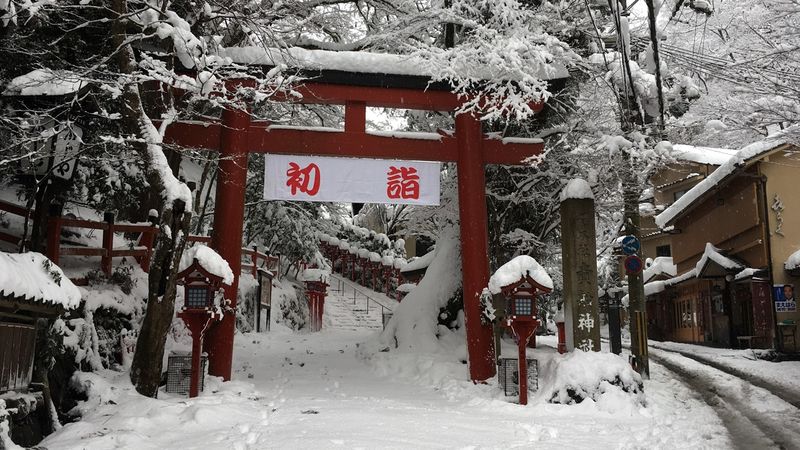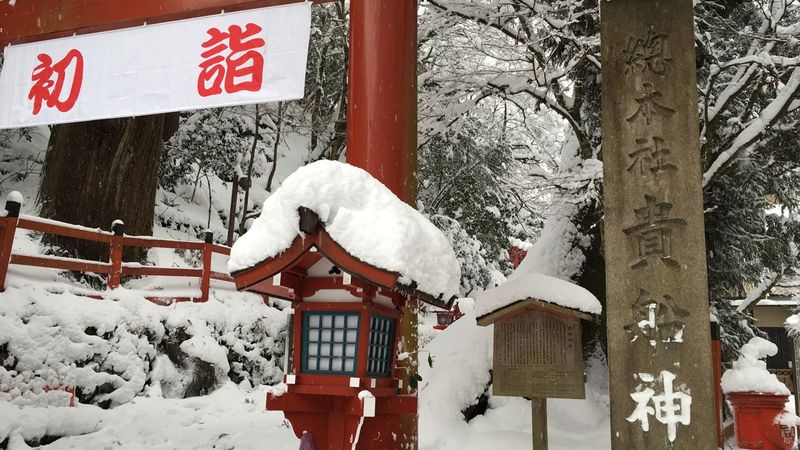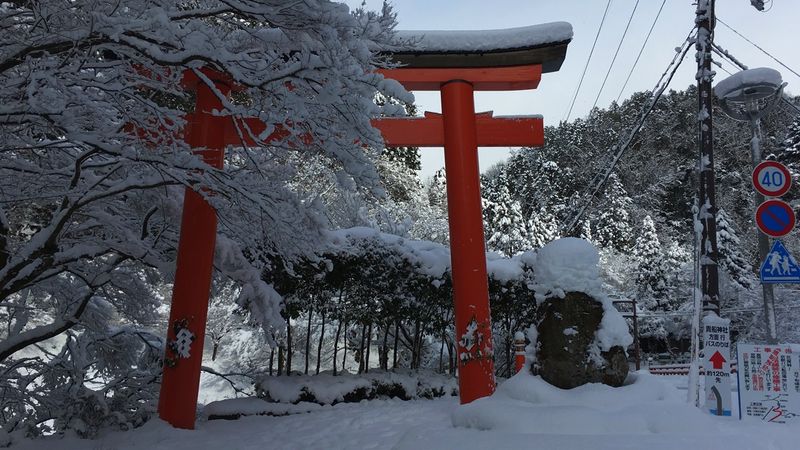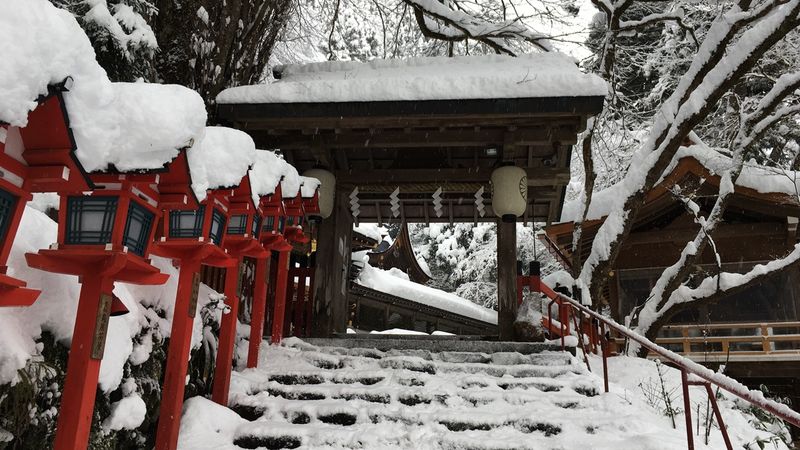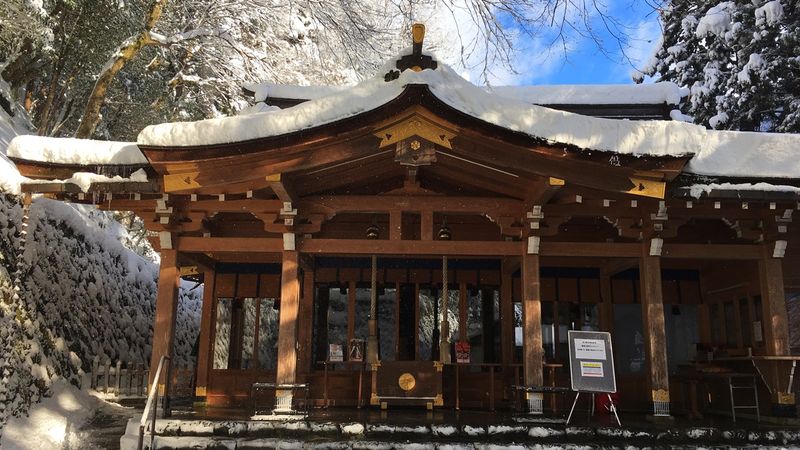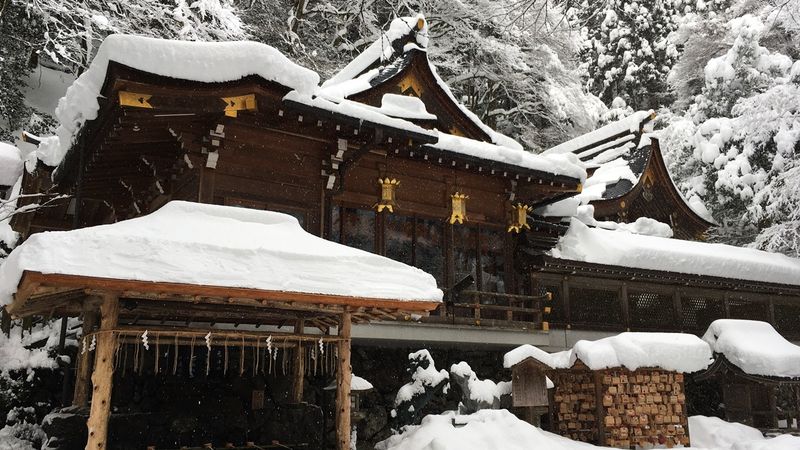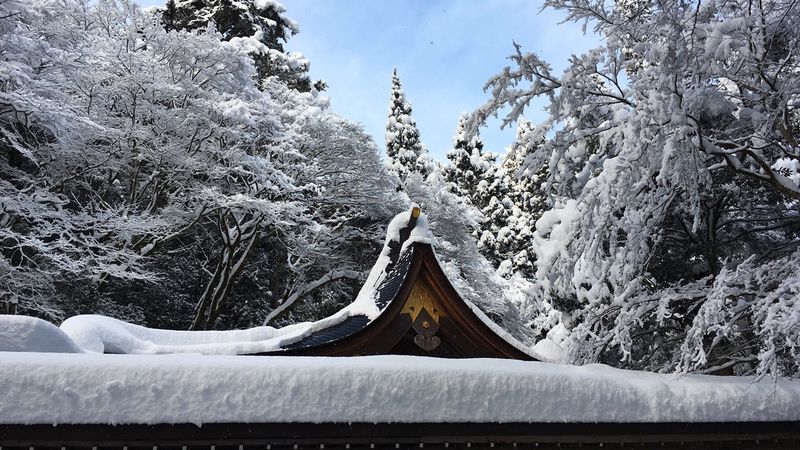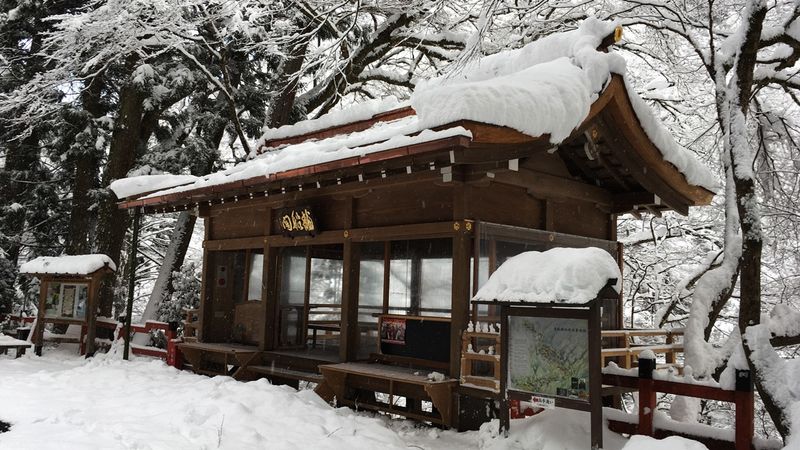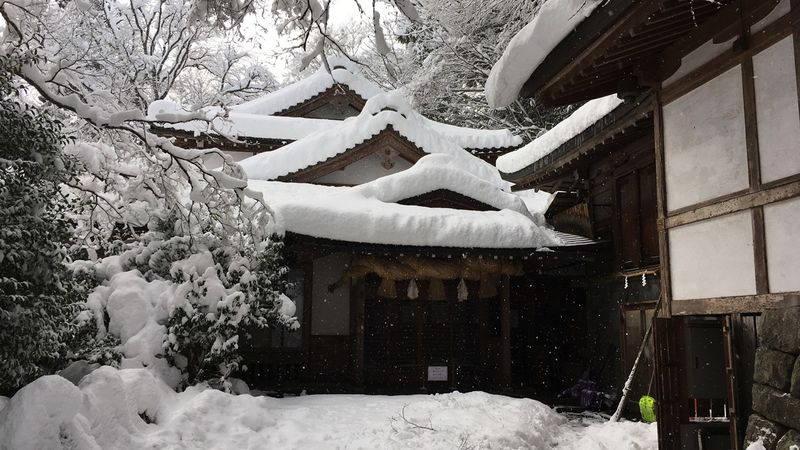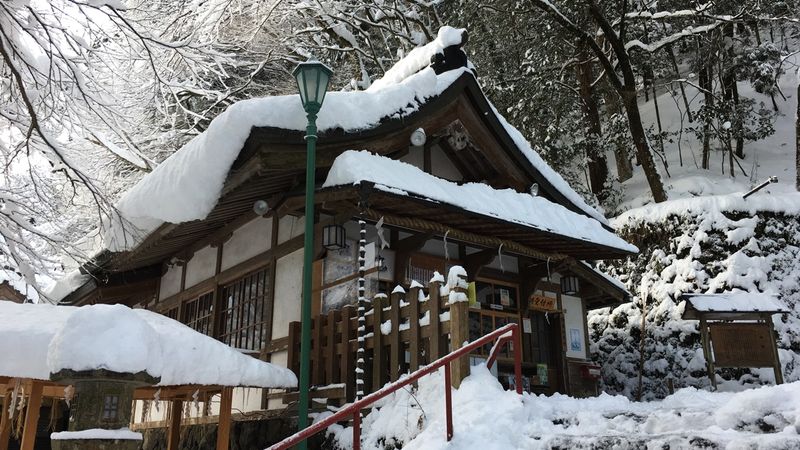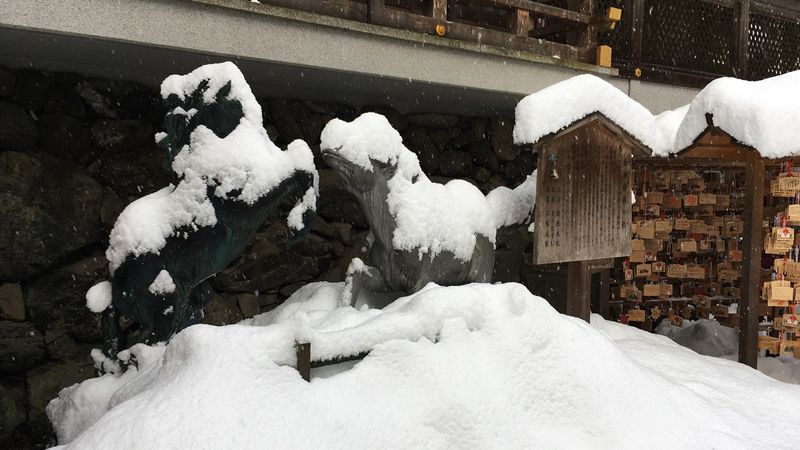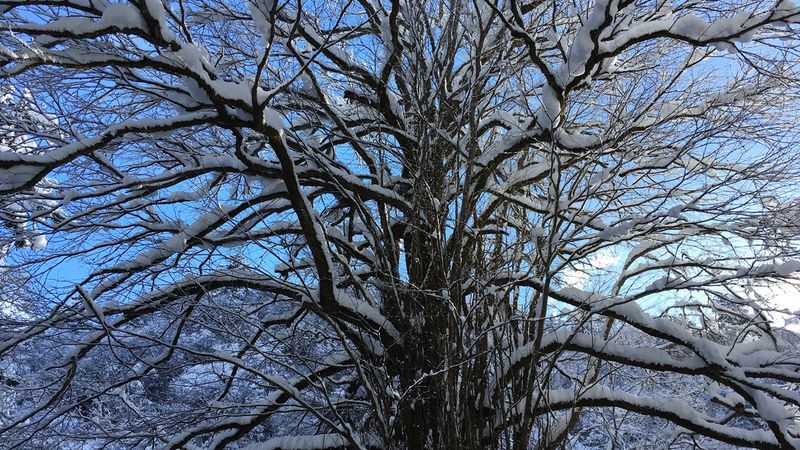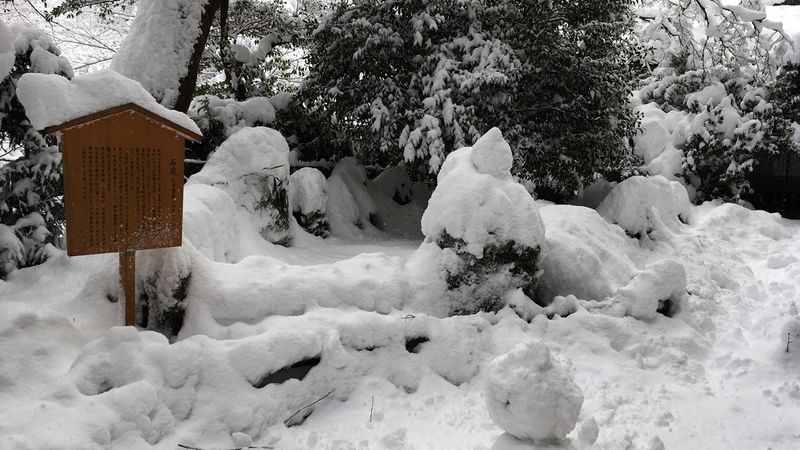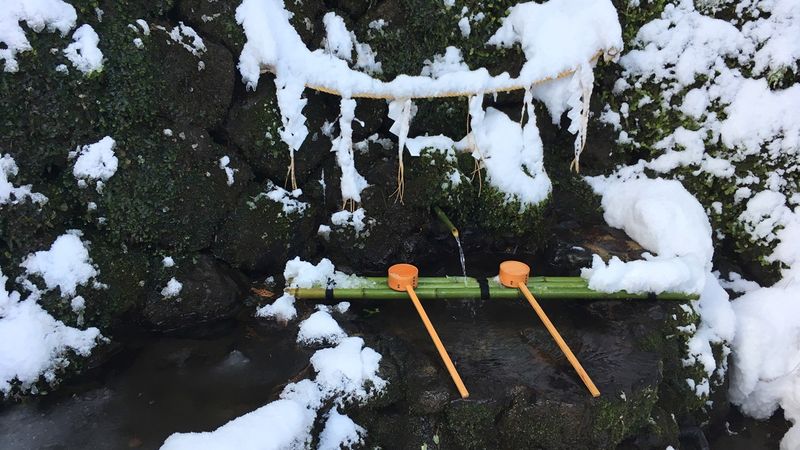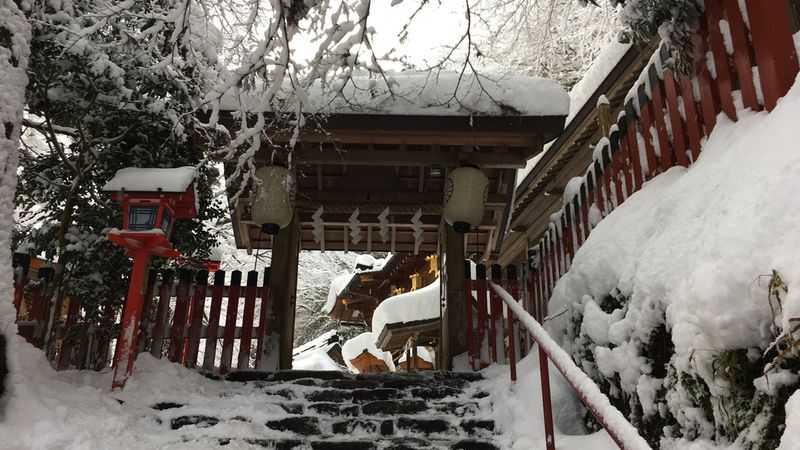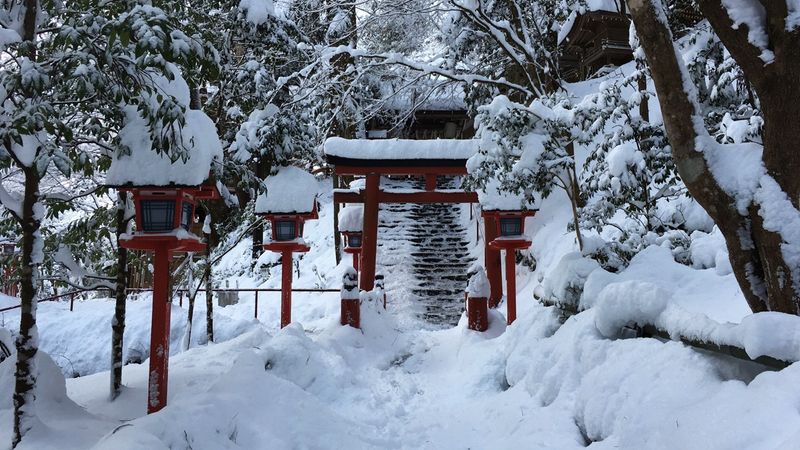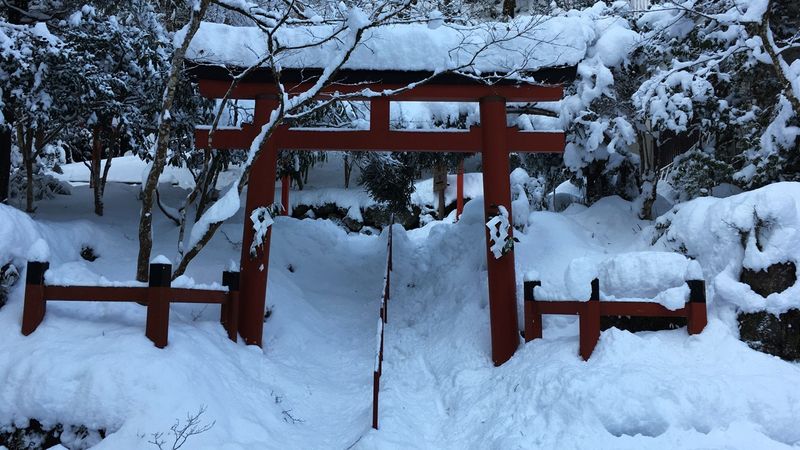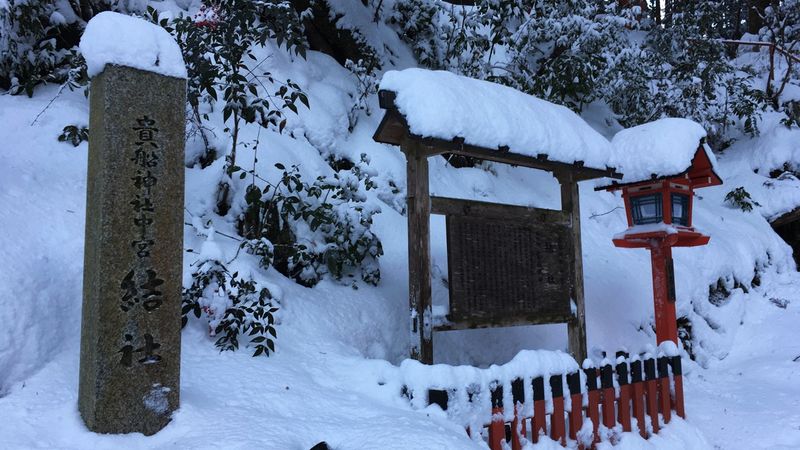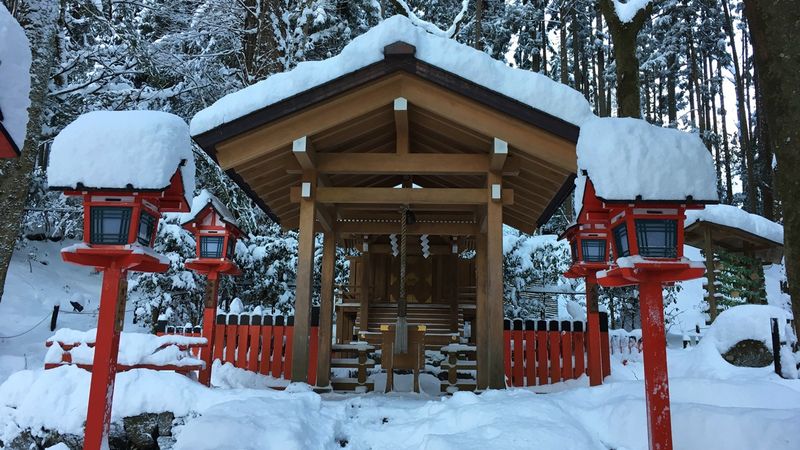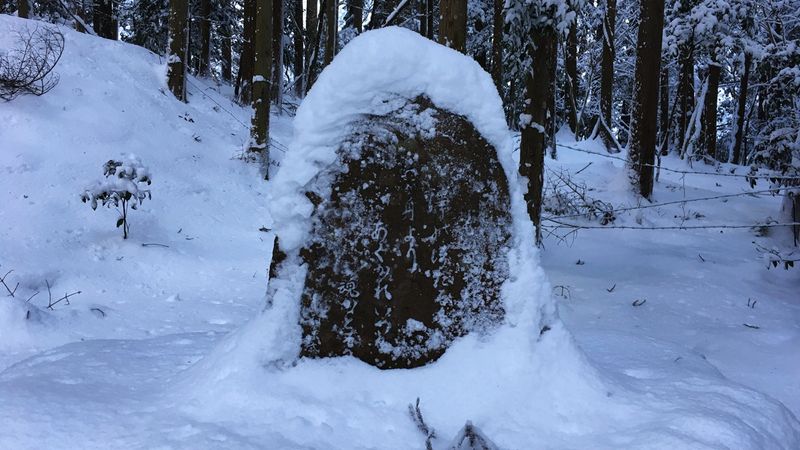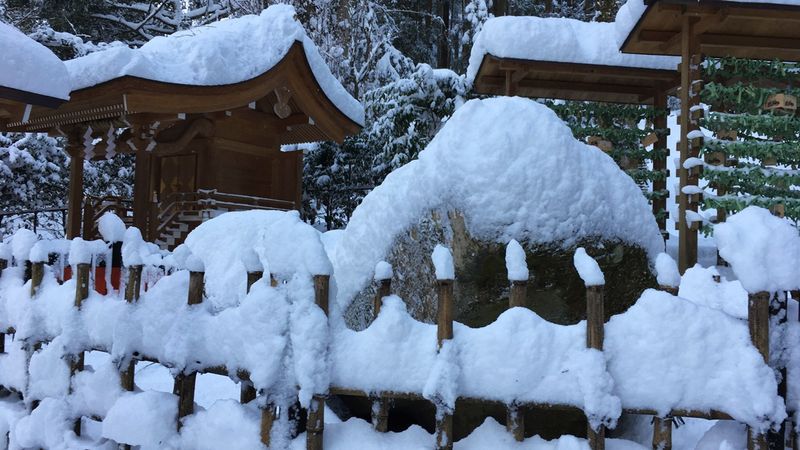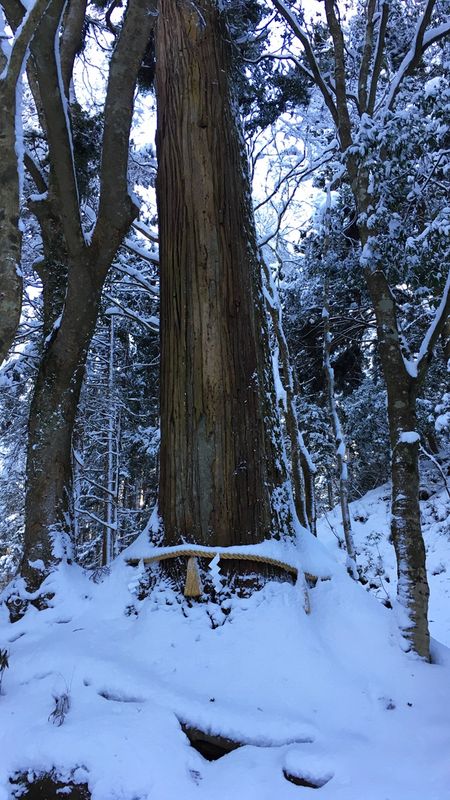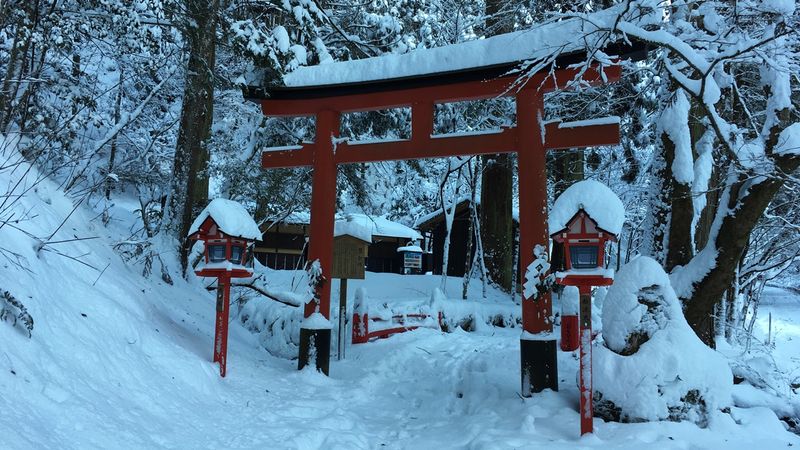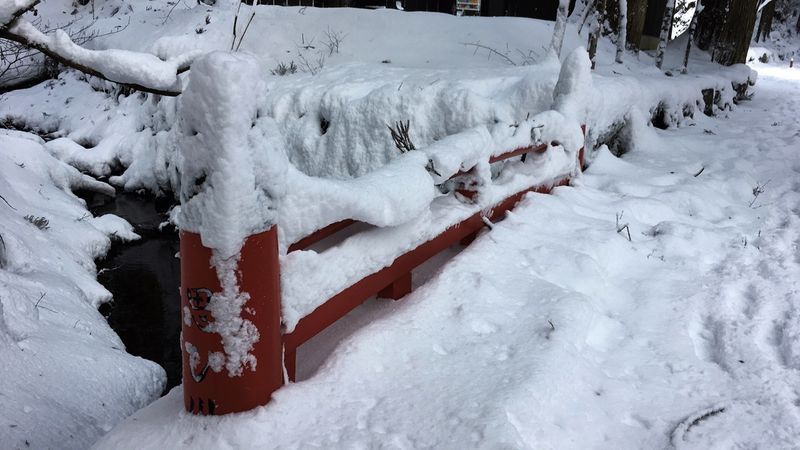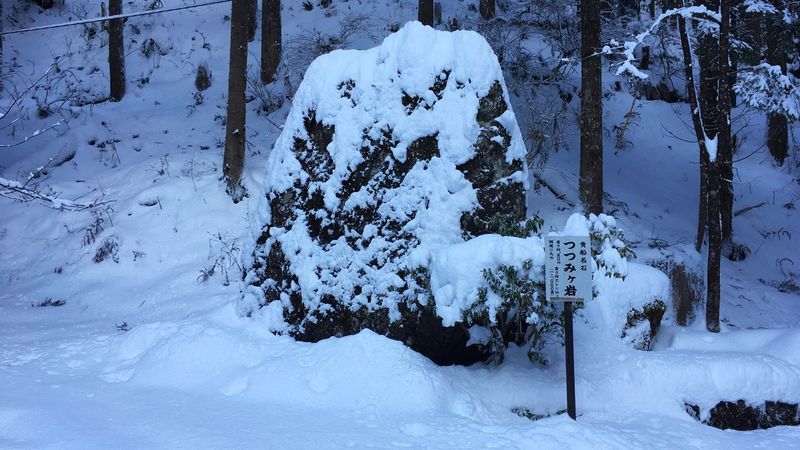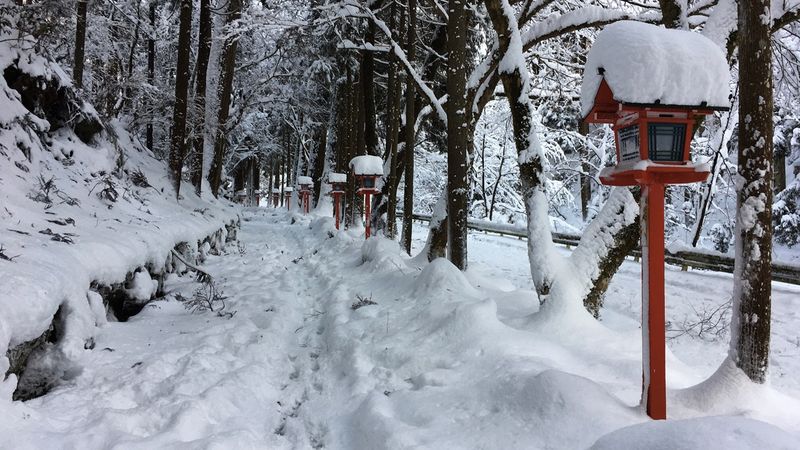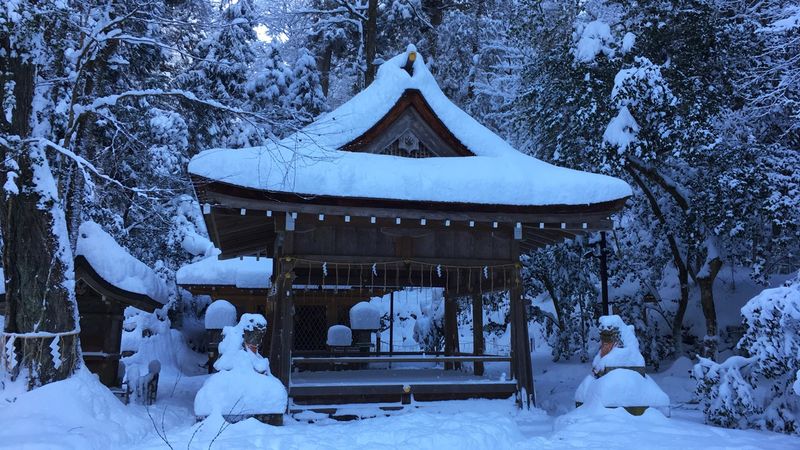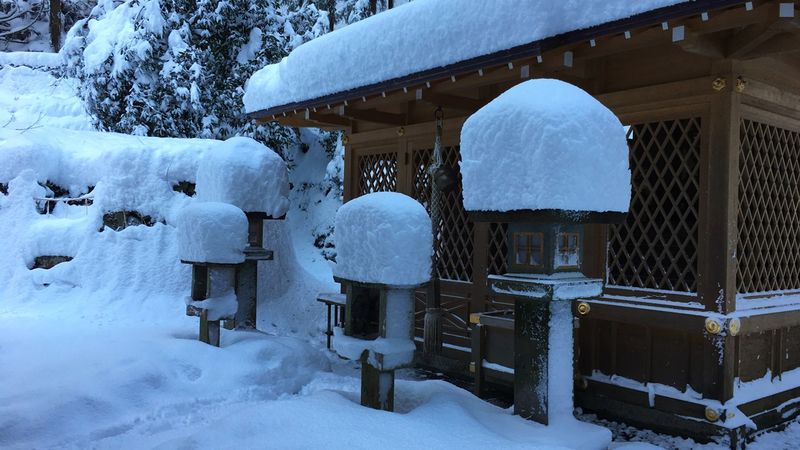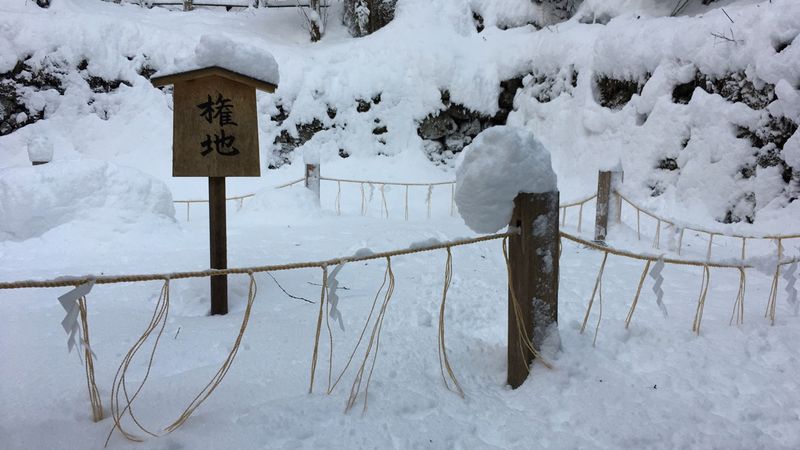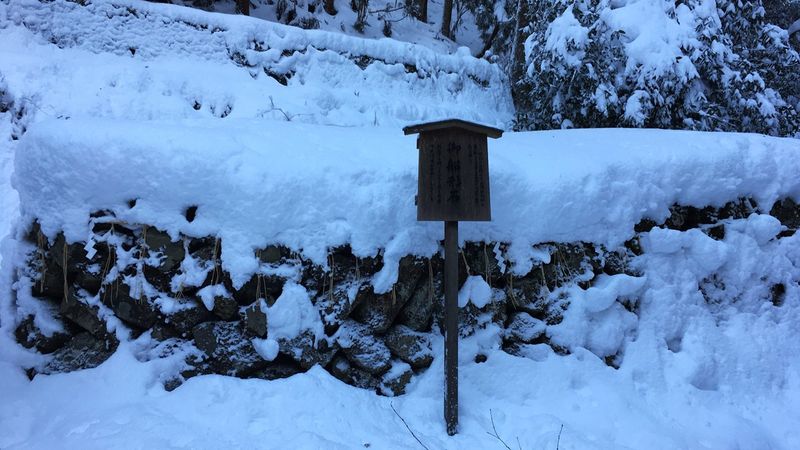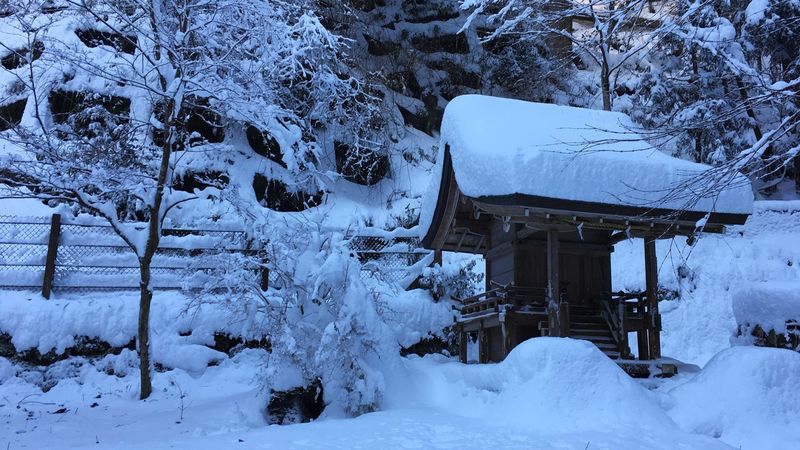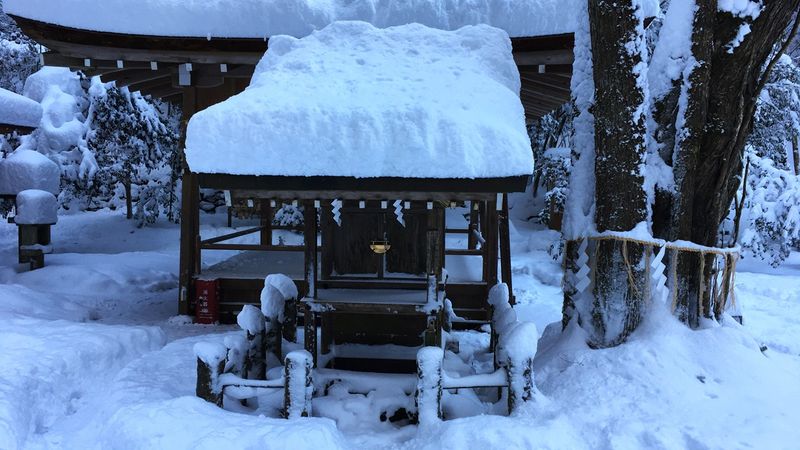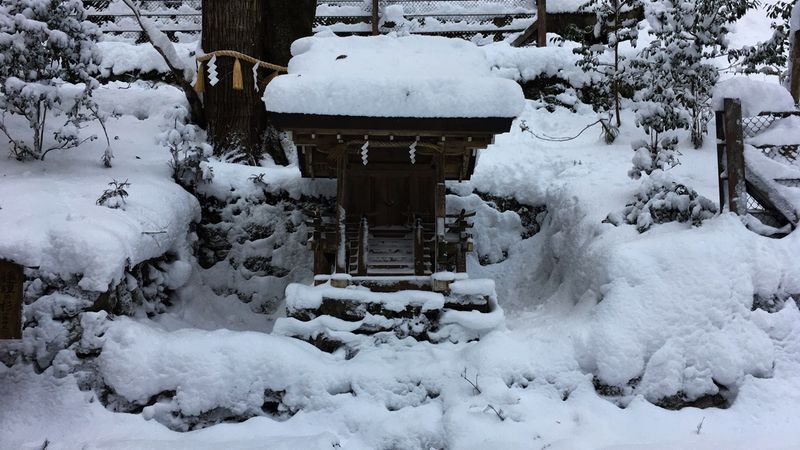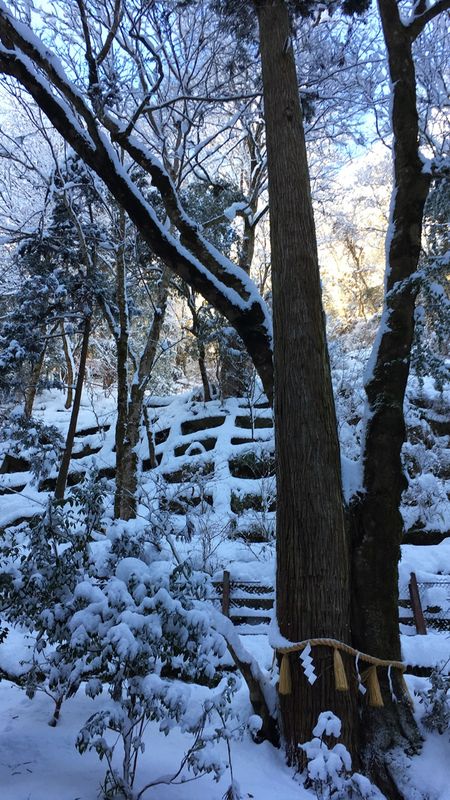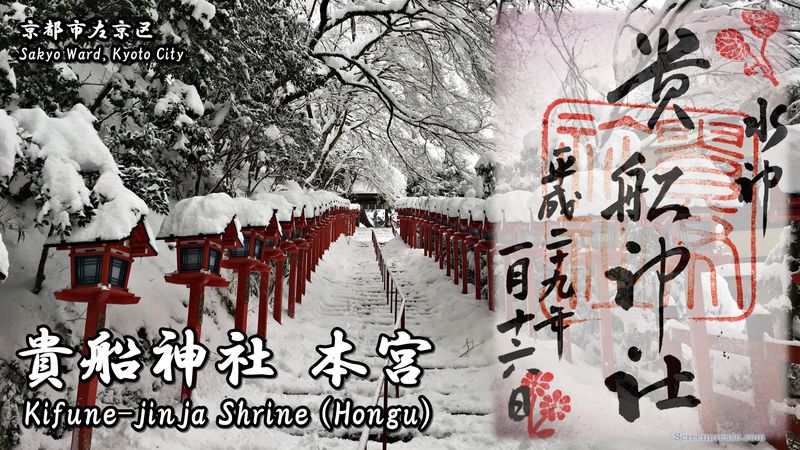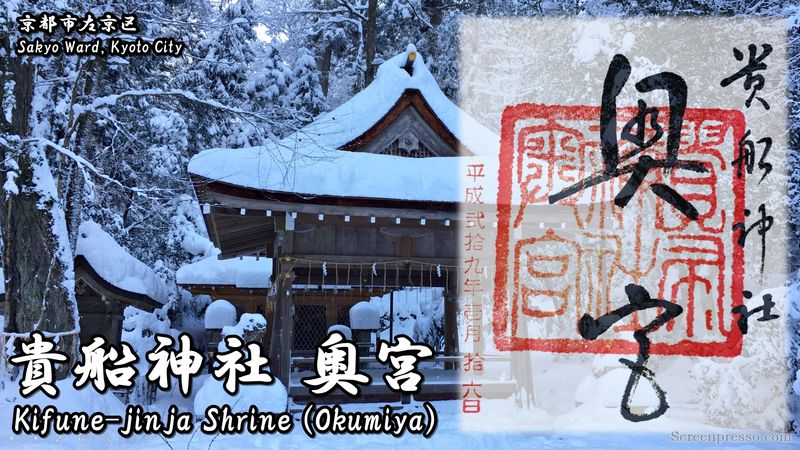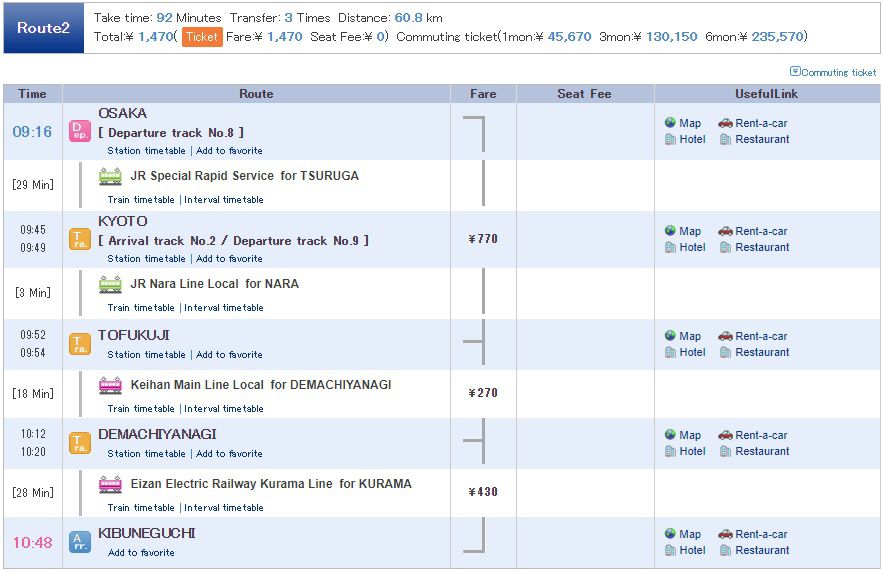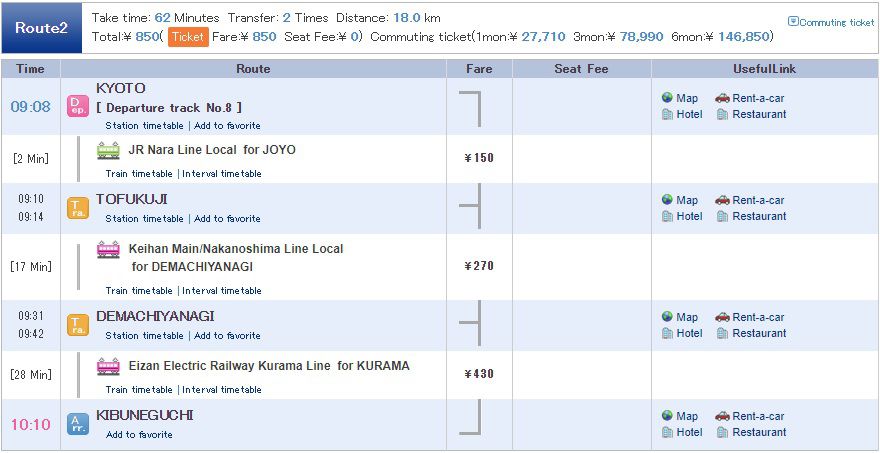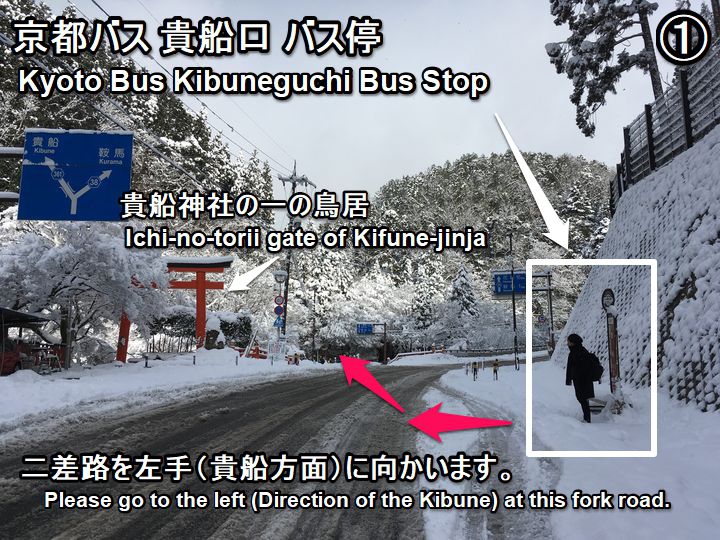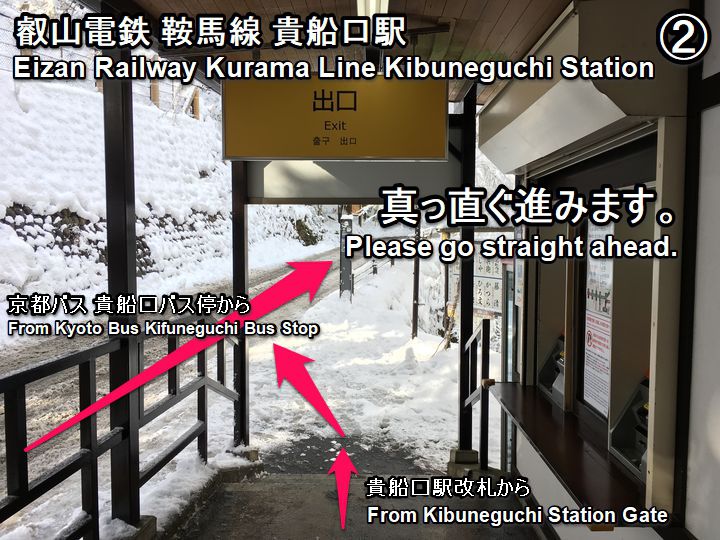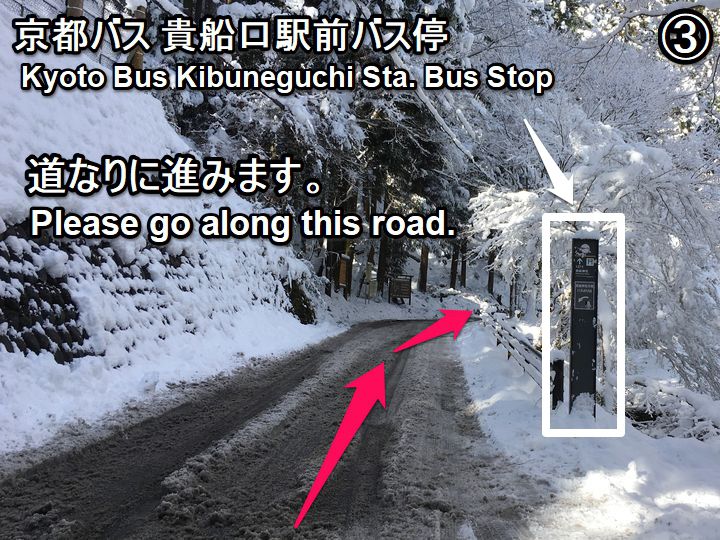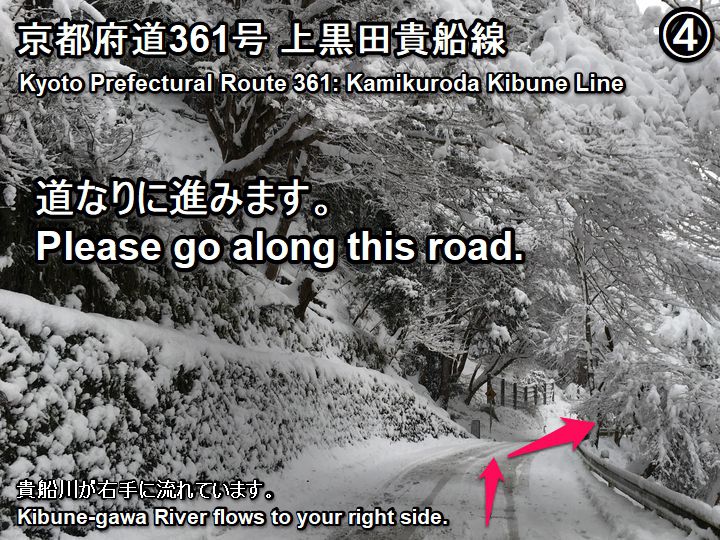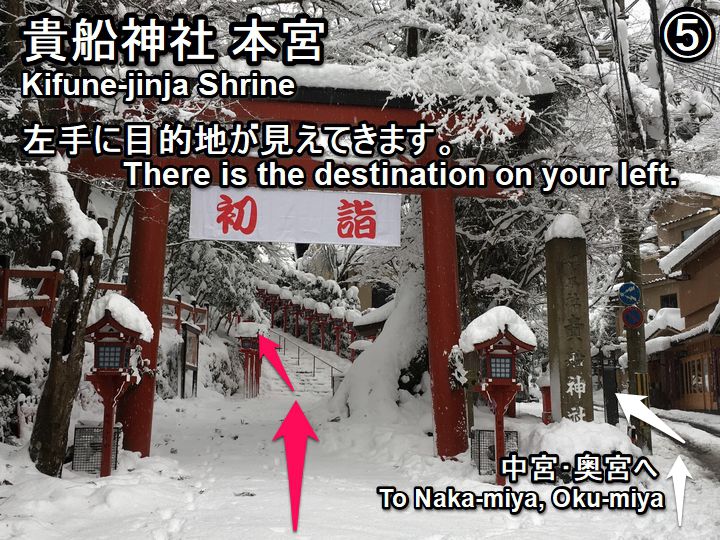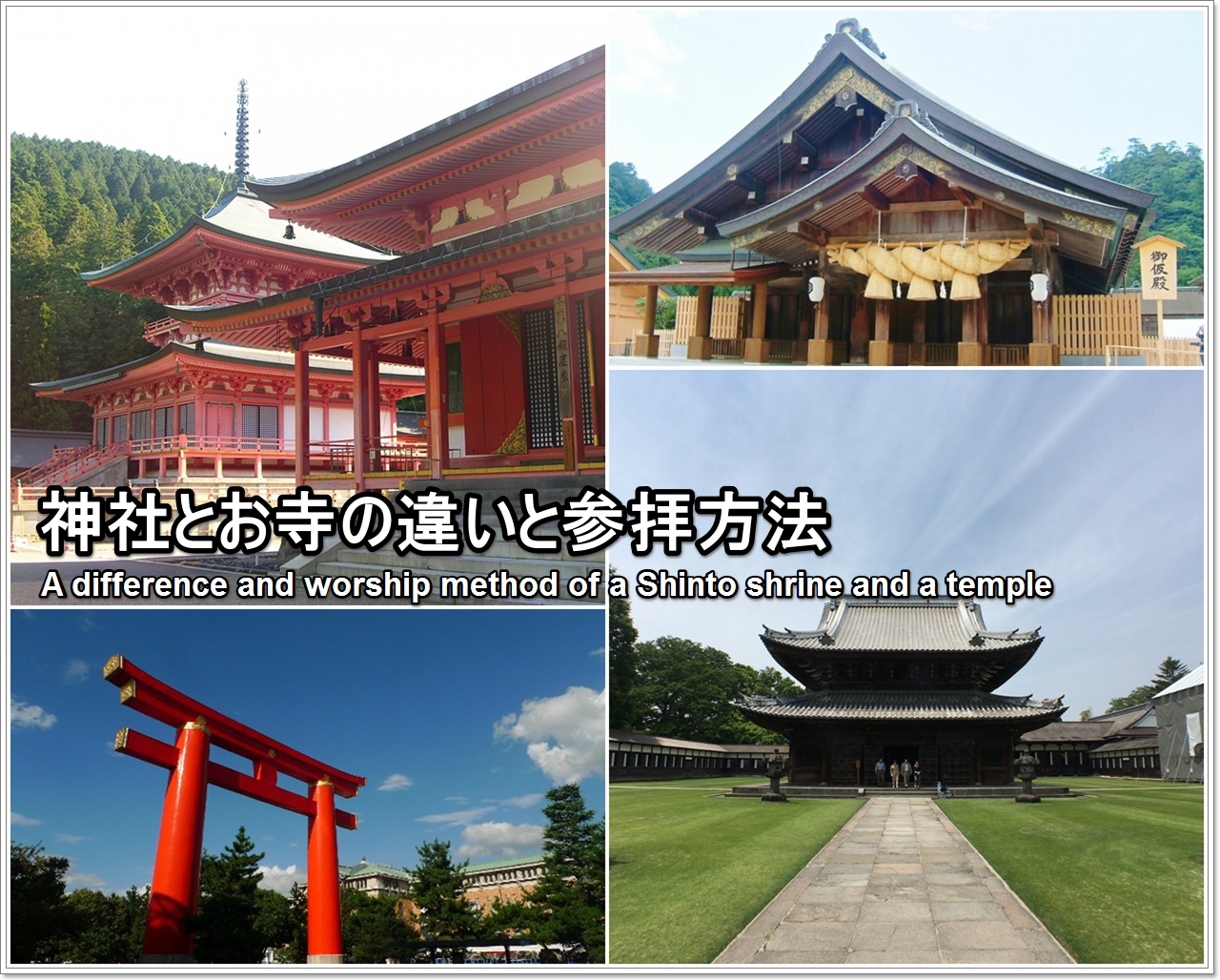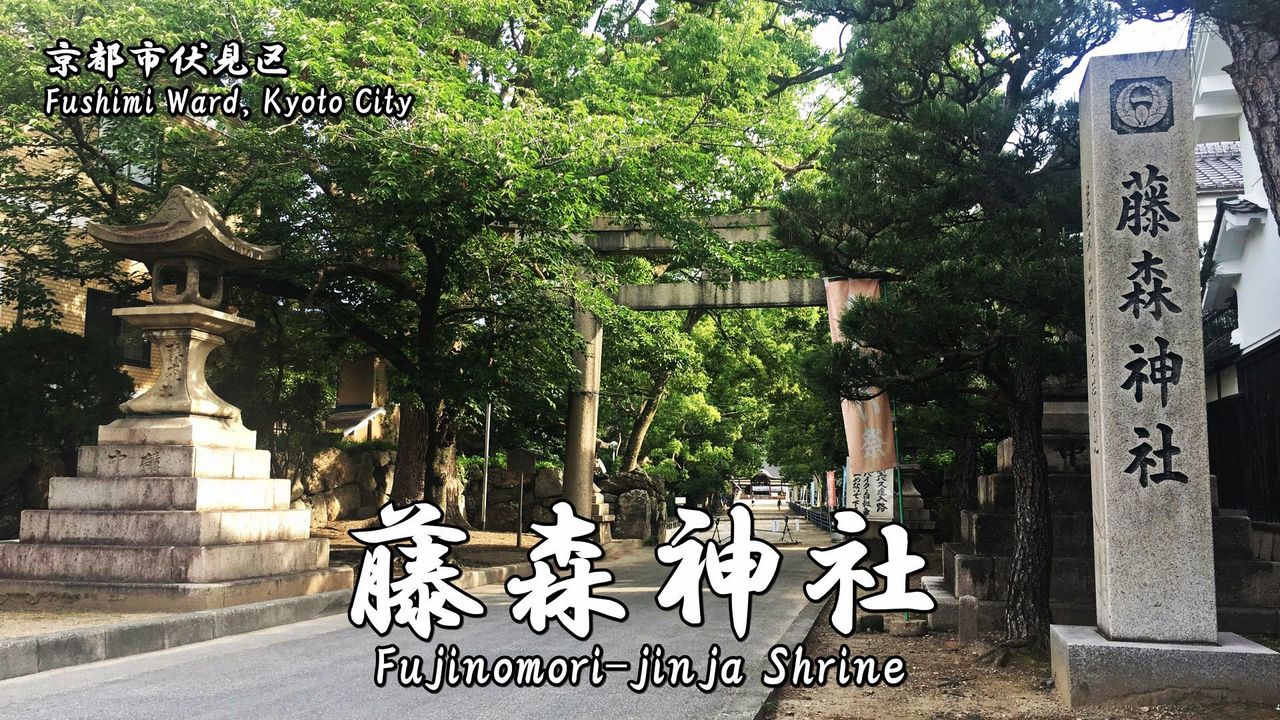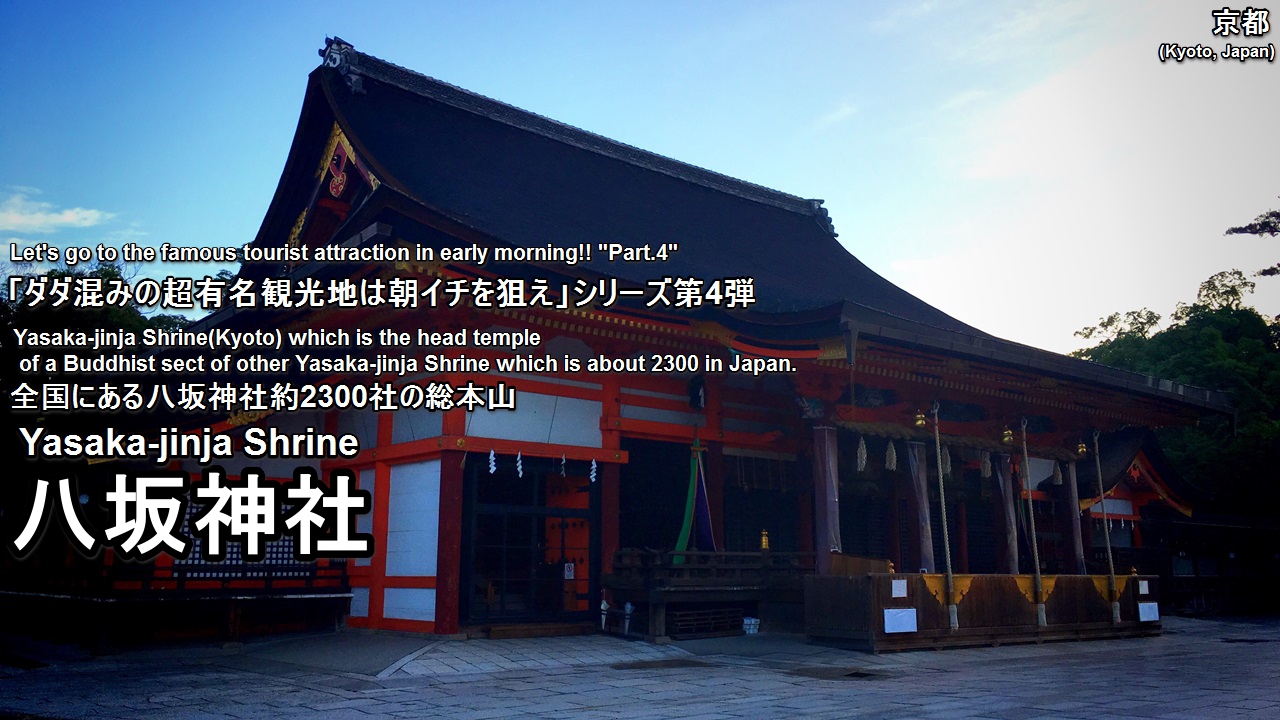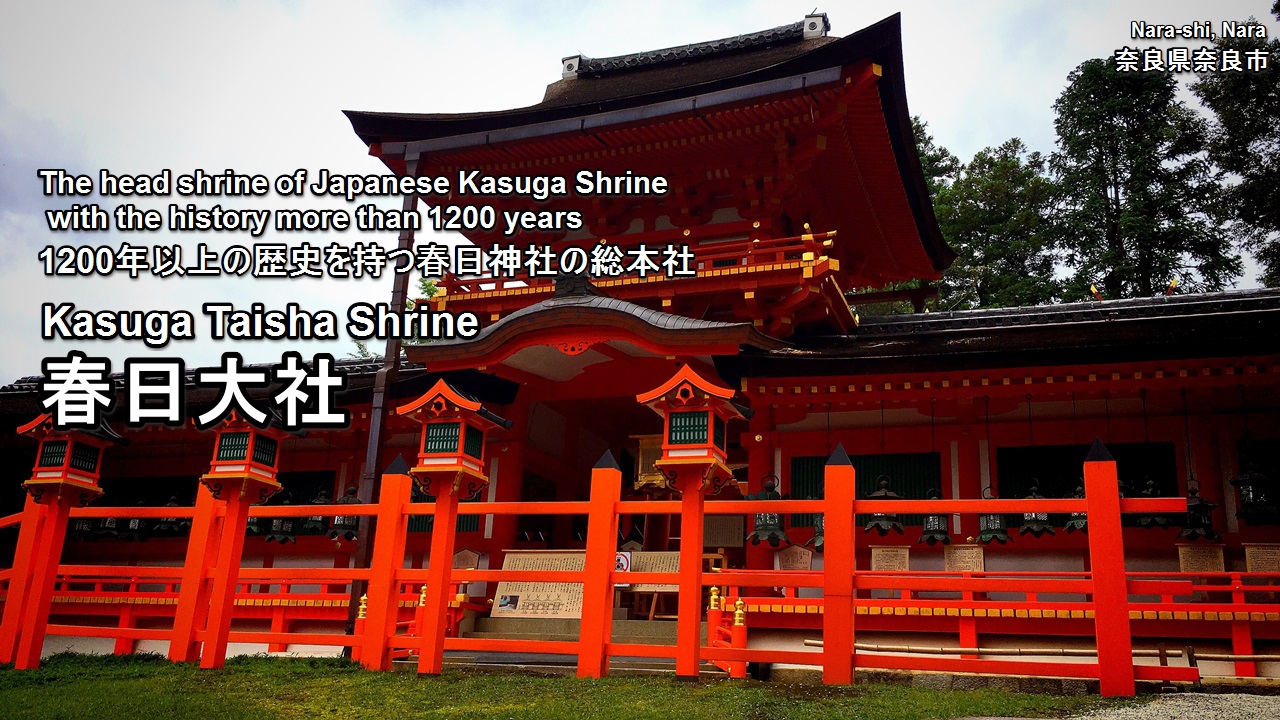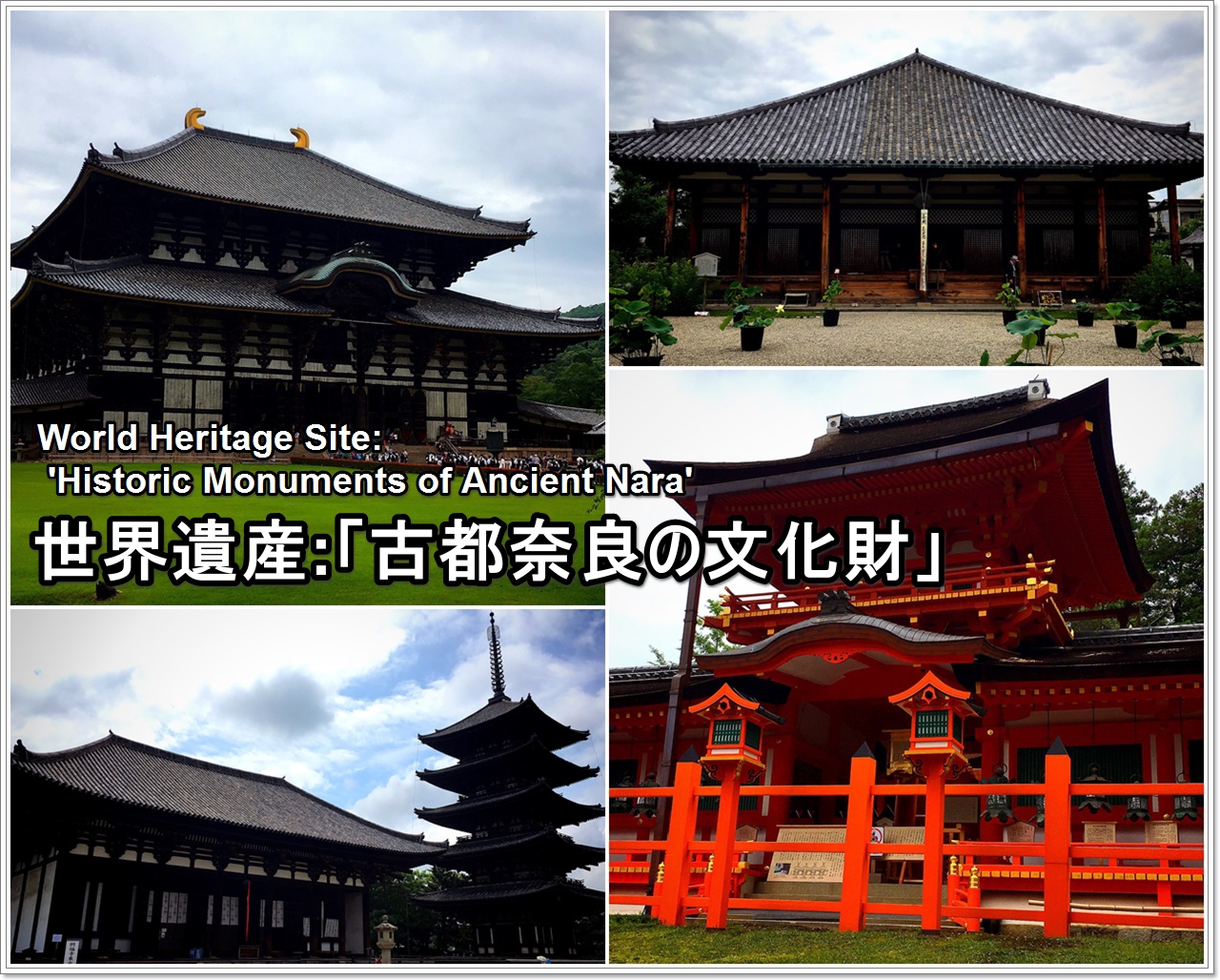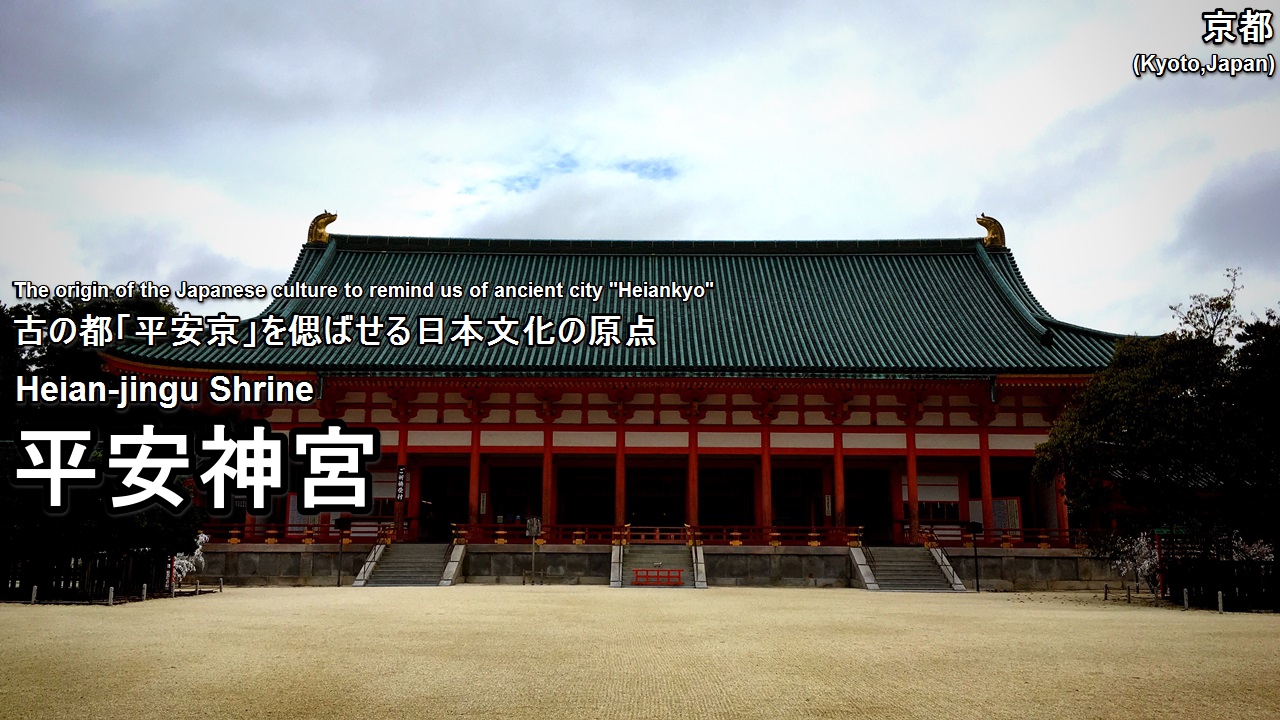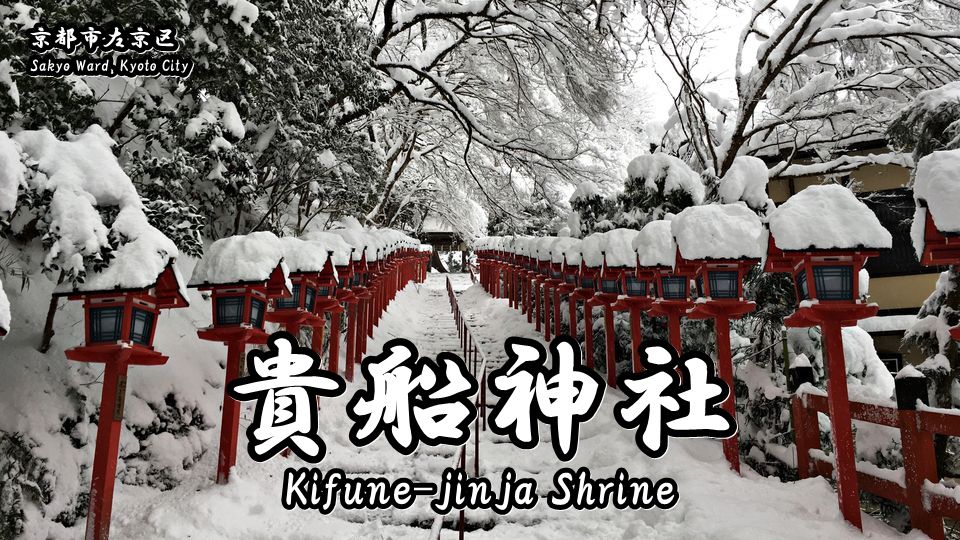
Kifune-jinja Shrine (貴船神社) is a Shinto shrine located in Sakyo Ward, Kyoto City.
It is one of the shrines on the exceptional list called ‘Beppyo-jinja Shrine’ of the Association of Shinto Shrines and is the head shrine of the approximately 450 Kifune-jinja Shrines throughout Japan.
Because Iwanagahime no Mikoto (磐長姫命) that is famous as a god of matchmaking is enshrined in the precincts, it is also famous as a sacred place for matchmaking and marriage.
History of Kifune-jinja Shrine
It is not known with certainty when the shrine was founded.
But, according to shrine legend, it was founded during the reign of Emperor Hanzei of the Kofun (tumulus) period.
The oldest remodeling of a Shinto shrine main building is recorded to have taken place circa 666 of the Asuka period.
The precincts of the shrine are currently divided into three sanctuaries called Hon-gu, Naka-miya, and Oku-miya.
A Dragon God called ‘Takaokami no kami / Kuraokami no kami’, the god of water, is enshrined in Moto-miya and Oku-miya.
Iwanagahime no Mikoto that is famous as a god of matchmaking is enshrined in Naka-miya.
About Kifune-jinja Shrine
Information
| Address | 180, Kurama Kibunecho, Kyoto Shi Sakyo Ku, Kyoto Fu, 601-1112, Japan |
| Phone | +81-75-741-2016 |
| Foundation | unknown |
| Enshrined deity |
[Moto-miya / Oku-miya] Takaokami no kami / Kuraokami no kami [Naka-miya] Iwanagahime no Mikoto |
Open
| May – November | 6:00 – 20:00 |
| December-April | 6:00 – 18:00 |
Admission Fee
Free
Parking lot
For 10 cars in Moto-miya (500 yen / 2 hours)
For 15 cars in Oku-miya (500 yen / 2 hours)
Other information
・It is information as of January, 2017.
・Please ask temple’s staff where you can take photos and videos.
・Worship method of a shinto shrine and a buddhist temple, please refer to the following article.
Next, let’s see highlights of this shrine with me!
Information for visitors
Official order of worship is “Moto-miya (本宮)” → “Oku-miya (奥宮)” → “Naka-miya (中宮)”.
Highlights of Kifune-jinja Shrine
- 一の鳥居:Ichi-no-torii (first torii gate)
- 二の鳥居:Ni-no-torii (second torii gate)
- 南参道:South approach
- 南門:South Gate
- 拝殿:Hai-den (Worship hall)
- 本殿:Hon-den (Main hall)
- 権殿:Gon-den
- 龍船閣:Ryusen-kaku
- 斎館:Saikan
- 授与所:Conferment place
- 手水舎:Chozuya
- 絵馬発祥の社:Monument of votive-horse-tablet’s birth
- ご神木(桂の木):Sacred tree (katsura tree)
- 石庭:Sekitei (Stone Garden)
- 御神水:Gojinsui (Sacred water)
- 北門:North Gate
- 北参道:North approach
- 三の鳥居:San-no-torii (third torii gate)
- 相生の杉:Aioi-no-sugi (Aioi cedar)
- 奥宮鳥居:Oku-no-miya Torii
- 思ひ川:Omoi-gawa river
- つつみヶ石:Tsutsumi-ga-ishi stone
- 奥宮参道:Approach to Okumiya
- 神門:Shin-mon Gate (Shrine Gate)
- 拝殿:Hai-den (Worship hall)
- 本殿:Hon-den (Main hall)
- 御船形石:Ofunagata-ishi stone
- 権地:Gonchi
- 吸葛社:Suikazura-sha shrine
- 鈴市社:Suzuichi-sha Shrine
- 日吉社:Hiyoshi-sha Shrine
- 連理の杉:Renri-no-sugi (Cedar of the eternal love)
[Hongu (本宮)]
Hongu (本宮) is located in the south side and is the main place of this shrine.
Main enshrined deity is Taka-Okami-no-Kami (高龗神), a Ryujin (龍神:dragon god), and it has the divine favor of water and rain.
一の鳥居:Ichi-no-torii (first torii gate)
二の鳥居:Ni-no-torii (second torii gate)
南参道:South approach
南門:South Gate
拝殿:Hai-den (Worship Hall)
本殿:Hon-den (Main hall)
A Dragon God called ‘Takaokami no kami’, the god of water, is enshrined in this building.
権殿:Gon-den
It is the building which becomes the temporary house when God moves.
龍船閣:Ryusen-kaku
It has a role of the rest house for worshipers.
斎館:Saikan
It is a building to cleanse mind and body before a Shinto priest performs Shinto ritual.
授与所:Conferment hall
We can buy a Goshuin and talismans in this building.
手水舎:Chozuya
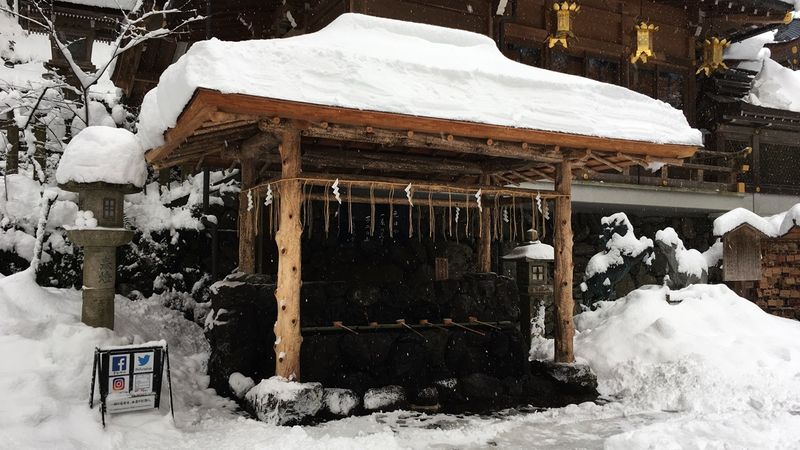 It is a building for cleaning hands and rinsing mouth.
It is a building for cleaning hands and rinsing mouth.
絵馬発祥の社:Monument of votive-horse-tablet’s birth
It is known as the birthplace of the Ema (a votive horse tablet).
ご神木:Sacred tree (katsura tree)
It is a Katsura-tree which has the 30 meters high and over 400 years old.
石庭:Sekitei (Stone Garden)
It designed by Mirei SHIGEMORI (重森三玲) who is a famous garden designer of the Showa period.
御神水:Gojinsui (Sacred water)
There is a spring water called Gojinsui (Sacred water) in front of Hai-den hall.
北門:North Gate
北参道:North approach
三の鳥居:San-no-torii (third torii gate)
[Naka-miya (中宮)]
It’s about 10 minutes (500 meters) on foot from Moto-miya (本宮).
Enshrined deity is Iwanagahime no Mikoto (磐長姫命) that has a divine favor of matchmaking (marriage).
結社:Yui-no-yashiro
Iwanagahime no Mikoto (磐長姫命) is enshrined in this building.
和泉式部の歌碑:Monument inscribed with a poem of Izumi Shikibu
This is a monument inscribed with a tanka poem of Izumi Shikibu (和泉式部).
「ものおもへば 沢の蛍も わが身より あくがれいづる 魂かとぞみる」
(Monomoheba Sawa-no-hotaru-mo Wagamiyori Akugareizuru Tamakatozomiru)
It expressed loneliness not to be able to meet her husband.
天乃磐船:Ama-no-iwafune
It has a shape of the ship and dedicated as a sacred ship of Iwanagahime no Mikoto (磐長姫命) enshrined in this Shinto shrine in 1996.
[Oku-miya (奥宮)]
It’s about 15 minutes (800 m) on foot from Hongu (本宮).
Main enshrined deity is Kura-Okami-no-Kami (闇龗神), a Ryujin (龍神:dragon god), and it has the divine favor of water and rain.
相生の杉:Aioi-no-sugi (Aioi cedar)
This is a sacred cedar tree of Okumiya (奥宮) which is called “Aioi-no-sugi (相生の杉:Aioi cedar)“.
The kanji called “Aioi(相生)” has a meaning of “A couple helps each other and lives”.
奥宮鳥居:Oku-no-miya Torii
思ひ川:Omoi-gawa river
Before reaching the Shinto Shrine, visitors are required to go through a purification ritual to make their bodies and spirits fresh.
So, it is said that Izumi Shikibu (和泉式部) went through a purification ritual to make her bodies and spirits fresh here.
つつみヶ石:Tsutsumi-ga-ishi stone
The huge stone put beside an approach to Okumiya is called “Tsutsumi-ga-ishi stone (つつみヶ石)“.
奥宮参道:Approach to Okumiya
神門:Shin-mon Gate (Shrine Gate)
拝殿:Hai-den (Worship hall)
It is a building for worship and prayer.
本殿:Hon-den (Main hall)
A Dragon God called ‘Kuraokami no kami’, the god of water, is enshrined in this building.
権地:Gonchi
It is the place which becomes the temporary place when God moves.
御船形石:Ofunagata-ishi stone
This huge stone has a shape of the ship and is said to be a sacred ship which “Tamayori-hime (玉依姫)” used.
吸葛社:Suikazura-sha shrine
Ajisukitakahikone-no-mikoto (味耜高彦根命), God of agriculture and thunder, is enshrined in this sub-shrine.
鈴市社:Suzuichi-sha Shrine
Himetataraisuzuhime-no-mikoto(媛蹈鞴五十鈴媛命) who is a wife of Emperor Jinmu (神武天皇) is enshrined in this sub-shrine.
日吉社:Hiyoshi-sha Shrine
Omononushi-no-mikoto (大物主命), God of Mountains, is enshrined in this sub-shrine.
連理の杉:Renri-no-sugi (Cedar of the eternal love)
Left side of this tree is cedar, and right side is maple.
Because Renri (連理) means that two kinds of different trees become one tree, it is said that this tree has divine favor of the harmonious marriage.
Video of Kifune-jinja Shrine
Photo of Kifune-jinja Shrine
Goshuin (Red ink stamp) of Kifune-jinja Shrine
We can also get it in a conferment hall. (300 yen)
How to get to Kifune-jinja Shrine
Nearest station is Eizan Railway Kurama Line Kibuneguchi Station.
We can also go by bus from Kyoto City Subway Kokusaikaikan (Kyoto International Conference Center) Station.
From Osaka Sta. to Kibuneguchi Sta. (by train)
Timetable and Route Search (train)
1.Get on the JR Kyoto Line from Osaka Station to Kyoto Station and change to the JR Nara Line.
2.Get on the JR Nara Line from Kyoto Station to Tofukuji Station and change to the Keihan Main Line.
3.Get on the Keihan Main Line from Tofukuji Station to Demachiyanagi Station and change to the Eizan Railway Kurama Line.
4.Get on the Eizan Railway Kurama Line from Demachiyanagi Station to Kibuneguchi Station.
From Namba Sta. to Kibuneguchi Sta. (by train)
Timetable and Route Search (train)
1.Get on the Osaka Metro Midosuji Line from Namba Station to Yodoyabashi Station and change to the Keihan Main Line.
2.Get on the Keihan Main Line from Yodoyabashi Station to Demachiyanagi Station and change to the Eizan Railway Kurama Line.
3.Get on the Eizan Railway Kurama Line from Demachiyanagi Station to Kibuneguchi Station.
From Kyoto Sta. to Kibuneguchi Sta. (by train)
Timetable and Route Search (train)
1.Get on the JR Nara Line from Kyoto Station to Tofukuji Station and change to the Keihan Main Line.
3.Get on the Keihan Main Line from Tofukuji Station to Demachiyanagi Station and change to the Eizan Railway Kurama Line.
4.Get on the Eizan Railway Kurama Line from Demachiyanagi Station to Kibuneguchi Station.
From Kibuneguchi Sta. to Kibune-jinja Shrine (on foot).
It’s about 50 minutes (2.4 km) on foot.
Get on a bus from Kibuneguchi Station
Timetable and Route Search (bus)
Please get on a Kyoto Bus No.33 bound for Kibune at Kibuneguchi Station bus stop and get off Kibune bus stop.
Bus company:Kyoto Bus
Routes/Destination:No.33[Bound for Kibune]
Boarding bus stop:Kibuneguchi Station
Alighting bus stop:Kibune
Bus fare:170 yen
Time required:About 5 min
Get on a bus from Kokusaikaikan Station
Timetable and Route Search (bus)
Please get on a Kyoto Bus No.52 bound for Kurama Onsen at Kokusaikaikan Sta. No.3 bus stop and get off Kibuneguchi bus stop.
Bus company:Kyoto Bus
Routes/Destination:No.52[Bound for Kurama Onsen]
Boarding bus stop:Kokusaikaikan Sta. No.3
Alighting bus stop:Kibuneguchi
Bus fare:280 yen
Time required:About 20 min
Take a taxi
From Kyoto Station:about 7,000 yen (40 minutes)
・Let’s show a taxi driver the following phrase.
・If you want to call a taxi, let’s show the following phrase.
・Phone number of taxi dispatch (Around Kyoto Sta.)
Hotel search & reservation around Kifune-jinja Shrine
How did you like it?
Have a nice trip!


